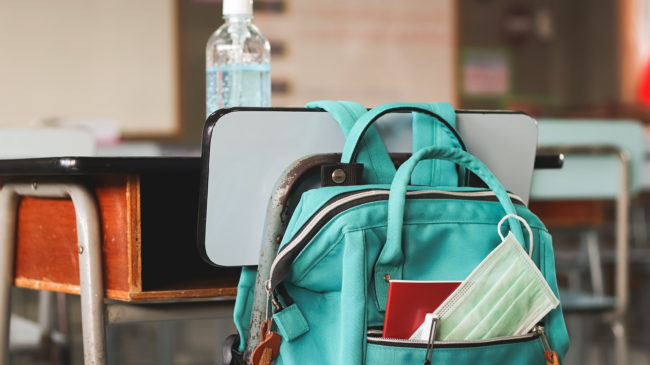The COVID-19 pandemic has left many American schools in trouble. A new national survey by Civis Analytics finds that 40 percent of families have already withdrawn their children from the schools that they were meant to attend this fall due to a variety of factors, including dissatisfaction with reopening plans, meaning less funding for those schools.
But the worst news for school budgets may be yet to come. While schools in some states fight to maintain levels of funding from previous years, state revenues— like sales, energy, and income taxes—are recession-prone and have been taking a beating in this recession, which is likely to cut into public school budgets going forward, just as they did during and following the Great Recession of 2007-08.
Though most state school funding systems needed reform even before the coronavirus pandemic, doing so now could present additional challenges given the pressing needs and costs of coordinating safe re-openings. But none of this means that policymakers can’t deliver practical changes that’ll help schools and students amidst the ongoing chaos.
For starters, schools and school districts will be best placed to tailor strategies for dealing with the pandemic and learning disruptions to the needs of their kids if they’re given more flexibility over how to use the monies they’re given. Most states place at least some restrictions on how these funds can be deployed. For instance, less than a quarter of state dollars in Idaho are delivered without a top-down mandate. Instead, most education dollars are restricted for purposes such as hiring support staff, professional development, and drug-free school programs.
While these may be worthy objectives, purpose-based mandates prevent district and school leaders, those closest to the ground, from aligning spending with student need as they cannot make tradeoffs and adjustments that speak to the unique priorities of their student population. This becomes especially concerning at times of crisis when dollars become scarce. Research also finds that prescriptive funding systems do little to improve student outcomes, and could actually undermine the factors that boost effectiveness. State policymakers should remove these burdensome spending requirements and also find other opportunities to eliminate burdensome regulations, such as lifting seat-time requirements.
Policymakers must also manage the problem of declining enrollment in public schools carefully. North Carolina, for instance, is expected to see enrollment in schools decline by up to 20 percent, as frustrated parents pursue other options. Because enrollment declines of this magnitude will lead to sudden drops in education revenues at the district-level, many organizations have called for hold harmless funding—which would fund school districts at least at the same levels as last year—even if they’ve seen enrollment declines likely related to the pandemic.
California and Arizona are two states that already caved to this pressure by declaring that school districts will be “held harmless” through guaranteed funding for this school year at last year’s enrollment levels.
While it’s true that the unique circumstances surrounding re-opening schools during the pandemic warrant a unique policy response, such band-aid funding solutions that simply delay inevitable budget cuts at school districts where enrollment losses may not rebound in the near or long term after the COVID-19 risk subsides should be avoided. Not only are hold harmless provisions costly, but they also divert resources from where students enroll and tend to stay on the books for years longer than intended.
A compromise for state policymakers could be to follow Texas’ lead: limit the hold harmless term for this school year to a 12-week period “grace period”, with the option to extend for subsequent periods with legislative approval. Policymakers might also want to consider integrating prior year enrollment trends into these calculations since some school districts are losing students for reasons that are unrelated to the pandemic.
Finally, where spending cuts must be made, policymakers should take a surgical approach that protects the students in greatest need, rather than enact blanket funding cuts across-the-board that’ll disproportionately harm low-income kids. For example, Ohio cut relatively more funding from affluent school districts that can raise more funds locally in order to shield its less wealthy and higher poverty school districts from cuts.
Additionally, inefficient funding streams—such as hold harmless provisions or minimum aid allotments that divert dollars to high-spending districts—could also be eliminated to save money and minimize the impact on vulnerable kids.
For many states, comprehensive reforms to school funding systems are desperately needed, but in the interim, there are practical and prudent steps policymakers can take to help schools support kids in the coming school year.



